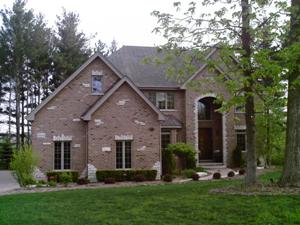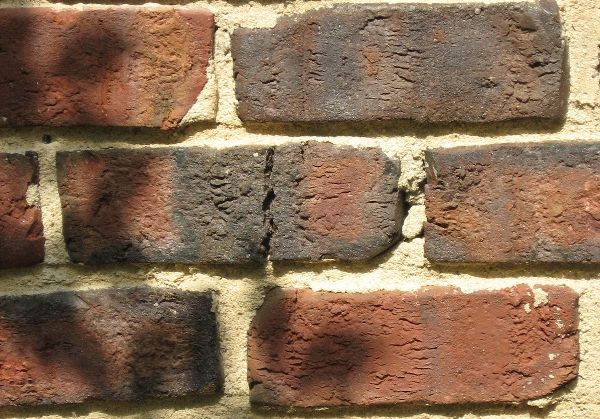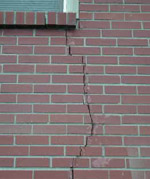
Figure 1 - Brick veneered house
Bricks can crack over time, due to the elements, as shown in Figure 2. Having one or two cracked bricks does not mean that you have a major problem. However, a cracked brick should be replaced as the crack allows water to enter which could damage structural members and interior finishes.

Figure 2 - Cracked brick

Figure 3 - Crack in brickwork
Do not confuse a cracked brick with a crack in the brickwork of your home, as shown in Figure 3. A crack in the brickwork will usually follow a line from the top to the bottom row of bricks. The crack will be in both bricks and mortar joints.
A crack in the brickwork is generally a sign that there is a problem with the foundation structure and should be investigated by a professional.
Replacing A Brick:
- One of the biggest challenges in replacing a brick is finding a matching brick. Bricks that are cracked have usually been weathered for many years, buying a new brick may present an aesthetic problem, especially if the cracked brick is located on the front of the house.
Finding replacement bricks:
- Check with local demolition and salvage yards. If you find weathered, matching bricks purchase a few extra. Next time you need a brick they may not be available.
- If you are ambitious you can remove a brick and replace it with a
close
match, from a wall area that is not visible, such as below a patio deck or on the back of the home, behind a shed or other wall fixture and in some cases an internal garage wall.
To remove a brick in tact without cracking it, takes care and patience. I think that the best method, is to use a drill with a 1/4 or 3/8 inch carbide drill bit (this assumes mortar that is approximately 1/2 inch thick).
Drill a number of holes in the mortar all around the brick, sides, top and bottom. Use a small masonry chisel to chip out the mortar between the holes. Do not allow the drill bit to hit the brick as this may crack the brick.
